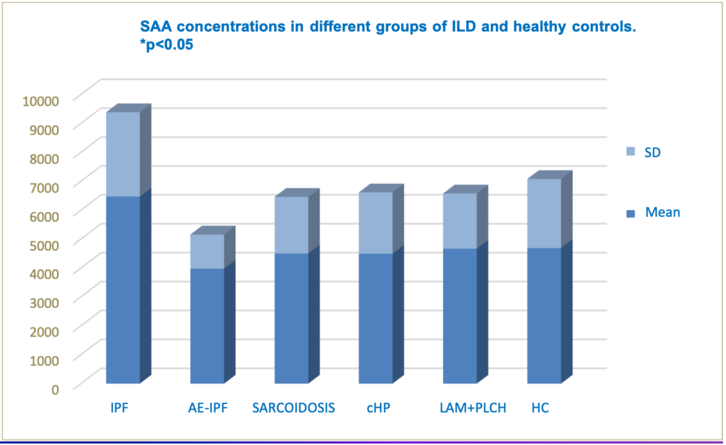Abstract
Background: Lipid metabolism is altered in different interstitial lung diseases (ILDs). The role of serum amyloid A (SAA) in the pathogenesis of fibrosis it's unknown, in particular in idiopathic pulmonary fibrosis (IPF).
Aims and Objectives: our purpose was to improve the results of our previous study [1] on SAA serum levels in IPF, to define its potential value as clinical biomarker and its specificity in IPF.
Methods: We recruited 131 patients, divided in 41 stable IPF, 8 on acute exacerbation (AE) of IPF, 24 chronic sarcoidosis, 24 hypersensitivity pneumonitis (cHP), 17 pulmonary langerhans cell histiocytosis and lymphangioleiomyiomatosis (PLCH-LAM) and 17 healthy controls. SAA levels were determined by an enzyme-linked immunosorbent assay (ELISA) kit.
Results: IPF group showed significantly higher levels of SAA than the other ILDs (6418 ng/ml, Figure1). A cut-off value of 4053 ng/ml of SAA discriminated IPF from AE-IPF and supports our hypothesis of SAA as a marker of fibrosis. SAA levels > 4057.8 ng/mL were associated to a poor prognosis in IPF.
Conclusions: SAA could be a potential biomarker of IPF that can predict clinical course, prognosis and survival of IPF patients. Monitoring SAA serum levels could help to identify rapidly progressive phenotype of IPF or at risk of acute exacerbation.
References
[1] Vietri, L. et al. Respiratory Investigation 2019; 57(5):430-434.
